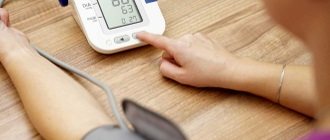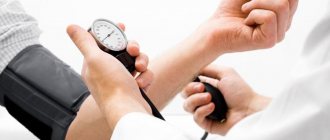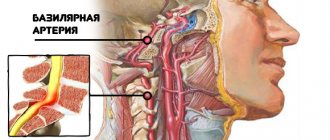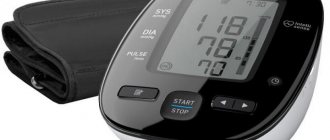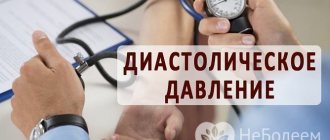Systolic and diastolic values are indicators of blood pressure. The first determines its degree of impact on the arterial walls during heart contraction. Diastolic is an indicator of pressure in the period between heartbeats. The values of these data allow you to understand whether the heart is functioning normally.
Systolic hypertension is a disease in which self-medication is very dangerous. It affects not only the functioning of the heart, but also the condition of blood vessels, kidneys and other organs. That is why it is important to approach the selection of medications with extreme caution.
The main goal of treatment is to ensure a gradual decrease in only the upper pressure. In this case, therapy may consist of drugs of various pharmacokinetic groups.
- Beta blockers. Recommended for patients who have experienced a heart attack. They normalize blood pressure. Beta blockers are contraindicated for diabetics and for diseases of the respiratory system.
- Diuretics. The action of this group of drugs is aimed at improving the functioning of the cardiovascular system. They have a limited list of contraindications, so even patients with diabetes can take them. Taking diuretics is rarely accompanied by side effects, but they prevent the development of a heart attack or stroke.
- Calcium ion antagonists. This group of drugs is indicated for patients with hypotension and disorders of the respiratory system. These drugs can also be prescribed to diabetics.
- AKF inhibitors. They are used in situations where the upper pressure is high and the lower pressure is low. Such medications have a beneficial effect on the nervous system and help restore brain function.
Your doctor will tell you why your upper blood pressure fluctuates and what is right for you. In order to detect the problem in time, it is necessary to undergo regular examinations. This will reduce high pressure levels and prevent the lower pressure from decreasing even further.
In addition to medication treatment, it is important to maintain a healthy lifestyle and eat right. Most often, high lower and upper pressure is a companion of overweight people.
When diagnosing hypertension, it is first necessary to:
- get rid of excess weight;
- eliminate bad habits - smoking and alcohol affect blood vessels and pressure indicators;
- remove fried, spicy and salty foods from your diet.
Light exercise and walks in the fresh air have a beneficial effect on the functioning of the cardiovascular system. It is important to measure your blood pressure periodically. Daily monitoring will allow you to stop the development of the disease in time and protect against possible complications.
Why is the upper pressure increased and the lower pressure decreased?
Upper pressure reflects the condition of large blood vessels and cardiac activity. An increase in this indicator indicates heart disease, adrenal pathologies, and progressive arrhythmia.
Lower pressure - indicates the state of the tone of blood vessels, and its decrease in most cases is due to the development of atherosclerosis, insufficient elasticity of the vascular walls, and the formation of atherosclerotic plaques.
A large difference between systolic and diastolic indicators can be caused by the following factors:
- Hyperthyroidism;
- Recent stroke;
- Heart rhythm disturbances;
- Nephritis;
- Aortic atherosclerosis;
- The patient has a history of myocardial infarction;
- Nephrosis;
- Myocarditis;
- Heart failure.
The reasons for high upper pressure with low lower pressure can also be due to dysfunction of the thyroid gland, undesirable age-related changes, cardiac diseases, and vascular pathologies.
Systolic and diastolic pressure characterize different phases of the heart cycle
Treatment of major diseases
High PP can be cured by getting rid of the underlying disease. But if high upper pressure and low lower pressure are caused by atherosclerosis, severe heart defects or age-related changes in the body, it is completely impossible to cure it.
Treatment of hyperthyroidism
If a large PD is caused by hyperthyroidism, the doctor will prescribe you thyreostatic drugs, which you will need to take constantly. They suppress overactive thyroid gland. During treatment, hormonal levels are normalized, so all unpleasant symptoms disappear, including high pulse pressure.
Effective thyreostatic drugs include:
- Mercazolil,
- Tyrosol,
- Thiamazole,
- Metizol.
You also need to follow a diet:
| Prohibited Products | Featured |
| Coffee, strong tea, chocolate, spices, salt, fatty meat and fish | Dairy products, fruits, vegetables (especially legumes), poultry, lean fish |
Treatment of pathologies of the heart and blood vessels
If a large PP is provoked by age-related changes in the heart and blood vessels, supportive medications and means to lower upper pressure are prescribed:
- Containing potassium and magnesium (Potassium and magnesium asparaginate, Panangin, Aspangin).
- Calcium channel blockers (Verapamil, Diltiazem, Amlodipine). These drugs affect not only your blood pressure, but also your heart rate, so take them only under the supervision of a doctor.
If high systolic blood pressure and low diastolic blood pressure are caused by serious defects in the cardiovascular system, you will need to have surgery to correct them. For example, aortic valve replacement.
What is the danger of this condition?
High upper and low lower pressure is an alarming symptom that should never be ignored! Permanently increased pulse pressure indicates negative changes occurring in the body that can provoke the development of a stroke or myocardial infarction.
With a pulse difference that occurs against the background of normal upper and reduced lower pressure, we can talk about pathologies such as myocarditis, cardiodilation, decreased vascular elasticity, myopathy, which require timely medical intervention and competent therapy.
If the difference is associated with an increase in upper blood pressure, this can lead to a number of dangerous complications affecting the heart, kidneys, and blood vessels. In this condition, there is a high risk of developing cardiac diseases, atherosclerosis, and renal pathologies.
For this reason, if a person has a persistently low diastolic with an increased systolic, it is necessary to contact a qualified specialist as soon as possible, undergo a medical examination, find out the exact diagnosis and causes of the pathological condition, and then undergo appropriate treatment.
Otherwise, the consequences can be very dire, including disability, loss of ability to work, and even the death of the patient!
The danger of high blood pressure
What does it mean if there is a big difference between SBP and DBP?
Doctors who are actively involved in the issue of ISAH and what to do about it clearly understand that elevated systolic blood pressure (SBP) has a much greater impact on the development of heart attacks, ischemic heart disease or cerebral strokes than DBP.
- Thus, in the process of observing different groups of patients, it was noticed that increased SBP can increase the risk of developing coronary artery disease by 3.7 times, and increased DBP by 2.8 times.
- With increased SBP, the risk of cerebral stroke increases by 8.2 times, and with increased DBP - only 4.4 times.
- With SBP above 160 and low DBP (less than 90), the incidence of stroke is several times higher than with the same SBP value, but with DBP more than 90 mmHg. Art.
Thus, a direct dependence of the frequency of threatening conditions on the value of pulse pressure was discovered. As can be seen from the above figures, a high pulse difference indicates an increased risk of stroke.
Moreover, it was possible to establish that a high pulse difference has the greatest prognostic value in women with hypertension from 49 to 70 years old.
About the condition when the lower pressure is low and the upper pressure is high, it is known that this means, first of all, a high pulse difference.
A high pulse difference for certain groups of patients is an immutable risk factor for the development of cerebral or cardiac accidents. You can draw your own conclusion - if such an imbalance is detected, you need to be examined and get a doctor’s recommendations for further action.
Symptoms of pathology
Unfortunately, often hypertension, provoked by a large difference in upper and lower pressure, does not manifest itself with any specific signs. As the pathological process progresses, the patient develops the following characteristic symptoms:
- Impaired coordination of movements;
- Chronic fatigue syndrome;
- Problems with memory and the ability to perceive new information, concentration;
- Chills, tremors;
- Excessively intense sweating;
- Lethargy, apathy, loss of strength;
- Panic attacks;
- Sleep disorders;
- Psycho-emotional instability, anxiety, restlessness, irritability;
- Rapid pulse;
- Heart rhythm disturbance.
A similar clinical picture is characteristic of pathological pulse pressure. However, if the difference between upper and lower blood pressure is due to a specific disease, damage to a specific organ or system, additional, specific signs are observed.
For heart failure
If the upper blood pressure is high and the lower blood pressure is low, due to heart failure, the difference is manifested by the following symptoms:
- Pastosity;
- Painful sensations localized in the chest area;
- Headache, migraine attacks;
- Heart rhythm disturbances;
- Dyspnea;
- Rapid heart rate (tachycardia);
- Extrasystole.
Patients may complain of heart pain and chest tightness.
Pressing chest pain may be a symptom of a large difference between upper and lower pressure
For atherosclerosis
If the cause of the excessive difference in pulse pressure lies in atherosclerosis, the following clinical picture is observed:
- A burning sensation, heaviness, numbness localized in the lower extremities;
- Increased fatigue of the legs when walking, physical activity;
- Trembling in the body;
- Feverish state;
- Pain syndrome localized in a specific part of the body;
- Dyspepsia;
- Fainting and pre-fainting conditions;
- Excessive dryness of the skin.
Symptoms may differ slightly depending on the form of atherosclerosis, which can be either local or total.
For thyroid diseases
One of the most common factors for increased heart rate difference is excessive production of thyroid hormones. High systolic pressure with low diastolic pressure, provoked by pathologies of the thyroid gland, is manifested by the following symptoms:
- Rapid pulse;
- Permanent feeling of hunger;
- Painful sensations localized in the abdominal area;
- Nausea;
- Hyperhidrosis;
- Erectile dysfunction in representatives of the stronger sex;
- Insomnia;
- Increased goiter;
- Menstrual irregularities in female patients;
- Tremor;
- Difficulty swallowing;
- Unreasonable anxiety, nervousness, irritability;
- Visual impairment;
- Increase in weight category.
In patients with hormonal imbalances and thyroid pathologies, the palms often sweat, the voice becomes hoarse, and the gaze becomes unblinking.
“Normal” blood pressure reactions to CST
With increasing physical activity, SBP increases linearly, mainly due to an increase in cardiac output to satisfy the demand from working muscles. Sympathetically mediated vasoconstriction reduces splanchnic, hepatic and renal blood flow (this increases vascular resistance), the local vasodilatory effect suppresses vasoconstriction (“functional sympatholysis”), allows the redistribution of cardiac output to working skeletal muscles and reduces overall peripheral vascular resistance. These opposite reactions contribute to the maintenance or slight decrease in DBP during CST. A detailed discussion of the regulatory mechanisms of these reactions is beyond the scope of our review; they are widely discussed elsewhere (20). The American College of Sports Medicine (ACSM) and the American Heart Association (AHA) define a “normal” response as an increase in SBP of approximately 8 to 12 mmHg. Art. (2) or 10 mm Hg. Art. (3) per metabolic equivalent (MET – 3.5 ml/kg/min). The source of these values is a 1973 textbook study where healthy men (with unknown sample size and age) showed mean and peak SBP increases of 7.5 and 12 mmHg. st./MET, respectively. An abnormally elevated (“hypertensive”) response to exercise was defined as exceeding these values (12 mmHg/MET) (5). Thus, widespread and long-standing recommendations defining a “normal” response to CST are limited by data from a single study of men with a poorly characterized phenotype. Below we will present information about the significant impact of the blood pressure response to CST depending on gender, level of training, concomitant diseases and associated medications.
Influence of age and gender
In a study of 213 healthy men (4), changes in SBP in response to increasing exercise intensity increased with each decade of life. The largest increase in SBP per MET was observed in the oldest group (50–59 years; 8.3 ± 2.3 mmHg/MET), compared with an average increase of 5.7 ± 2.3 mmHg. Art./MET in the youngest group (20 – 29 years old). With age, the slope of the response graph increased (p <0.001) (Fig. 1a).
Data on the effect of gender on BP response during CST are limited. A group of healthy women aged 20–42 years responded with an average increase in SBP of 5.0±1.1 mmHg. st./MET (21). The slope of the graph should be less than that of men of the same age (Fig. 1b, p <0.001). It is noteworthy that the average increase in the groups of men and women was much lower than the “normal” response range of 8 – 12 mm Hg. st./MET. In contrast, current studies of the effects of age and sex suggest that in older women, the hypertensive response to exercise occurs due to a limited ability to reduce systemic vascular resistance (22). Unfortunately, there are no data on the BP response to exercise in older adults (>65 years), which limits our clinical interpretation of the BP response to CST.
Impact of health status and medications
The level of training during CST behaves as an independent factor influencing blood pressure. According to Fick's rule, maximum oxygen consumption (VO2max) depends on cardiac output and the arteriovenous oxygen difference. A higher VO2max value corresponds to a higher cardiac output, which means a greater increase in SBP. Therefore, when interpreting the maximum SBP obtained during CST, it is necessary to take into account the level of training (VO2max). The rate of change in SBP can also change with the level of training. In a study of young men, 16 weeks of endurance training increased VO2max and peak SBP (Fig. 2a) during CST (23). When we plotted the increase in SBP during CST versus VO2max, the slope of the curve after training was steeper (Fig. 2b; p=0.019). In women, differences in SBP during CST are also observed depending on training. With increasing training, SBP with CST is lower than that of sedentary peers. Young, exercised women achieve higher SBP at the end of the test compared to their sedentary counterparts (24).
Rice. 1. Response of systolic blood pressure (SBP) to a progressive exercise test in healthy people.
Values are presented as changes (Δ) in SBP compared to baseline values with increasing exercise intensity, expressed in metabolic equivalents (METs):
- a) data from healthy men, divided by decades of life;
- b) data from healthy men (20 – 39 years old) and women (20 – 42 years old).
The figure is based on previously published values (4, 21). Regression equations are presented for each gender.
* p < 0.001 for between-group differences in the slope of the SBP response curve.
Rice. 2. Systolic blood pressure (SBP) response before and after 16 weeks of endurance training in healthy men:
- a) the maximum SBP was obtained in a test with a gradual increase in load;
- b) the increase in SBP during the test is shown as a percentage of maximum oxygen uptake (VO2max).
The figure is based on previously published values (23). Before/after regression equations are shown.
* p < 0.05 for differences in the slope of the SBP response curve.
Comorbidities, especially those affecting BP and its regulation, or other indicators of cardiovascular disease also influence BP response to exercise. In people with normal and untreated hypertension (without known baroreflex sensitivity impairments), there is a similar increase in SBP and mean BP with increasing exercise intensity, but the higher baseline BP in people with hypertension results in greater values at maximal effort (25, 26). Conversely, people with hypertension and impaired arterial baroreflex sensitivity experience a greater absolute increase in BP during bicycle ergometry (27). Individuals with changes in autonomic nervous system function also differ in their BP response to exercise, as cervical spinal cord injuries (eg, tetraplegia) are typically associated with altered cardiovascular activity due to absent or reduced sympathetic tone below injury levels (28). Some studies have shown a decrease in SBP with exercise in people with tetraplegia, compared with healthy controls and people with paraplegia (partial or complete preserved sympathetic tone below the level of injury) (29, 30). Similarly, people with diabetes and autonomic neuropathy experienced less of a rise in SBP from baseline and reached lower peak values (37 ± 6 mmHg and 158 ± 7 mmHg, respectively) compared with people without autonomic neuropathy ( 55±8 mmHg and 176 mmHg) (31). In addition, in patients with coronary artery disease, dyslipidemia, and diabetes, aerobic exercise may increase DBP (32, 33). All of these responses are distinct from the pathological conditions associated with exercise hypotension (10 mmHg decrease in SBP with increased exercise) (2, 3), including coronary heart disease and left ventricular dysfunction (34 – 36). Medications prescribed in this clinical population also lower exercise BP: nitrates, calcium channel blockers, diuretics, angiotensin-converting enzyme inhibitors, angiotensin receptor blockers, and β-blockers (37). Regarding β-blockers, by recording SBP directly from the brachial artery during bicycle ergometry, Floras et al (38) showed a significant attenuation of the SBP response by chronic blockade of cardioselective β1-adrenergic receptors; but nonselective blockade of β1 and β2 adrenergic receptors did not alter this BP response.
Impact of the CST protocol
The type of CST also influences the blood pressure response. In healthy men, four progressive treadmill protocols resulted in similar maximum SBP (39), whereas in women the slope of the SBP response curve and maximum SBP observed in the Bruce and Balke treadmill protocols were significantly different (21). Treadmill and cycle ergometer exercises, with stepwise and continuous increases in exercise, produced similar maximum SBP in men (40). However, bicycle ergometry results in greater maximum SBP in the clinic (41) and in trained individuals (42), possibly due to the addition of isometric work (hand grip) or increased quadriceps activation (and thus sympathetic afferent activity). Therefore, when interpreting the BP response to CST, the type of exercise must be taken into account.
Diagnostic methods
A large difference in systolic and diastolic blood pressure is a sure sign of pathologies of an endocrine or cardiovascular nature. If a patient has a stable increase in upper pressure and low lower pressure, he is prescribed the following types of studies:
- Electrocardiogram;
- General and detailed laboratory blood tests;
- Hormone test;
- Ultrasound examination of the heart;
- Tests to determine cholesterol and blood glucose levels;
- Pressure monitoring using the Holter method.
Based on the results of the general examination, the patient is sent for additional diagnostics to a cardiologist or a specialist - endocrinologist.
Holter monitoring monitors heart function throughout the day
Folk remedies
Tinctures of ginseng and hawthorn help with the large difference between systolic and diastolic blood pressure.
Before using them, consult your cardiologist.
Ginseng
Ginseng tincture Ginseng contains glycosides that have a beneficial effect on the heart, as well as vitamins and minerals that strengthen blood vessels (potassium, magnesium, iron, B vitamins). This remedy helps to increase lower blood pressure, but can also increase systolic blood pressure.
Take 15–20 drops 3 times a day for 2 weeks. Dilute the product in 30–50 ml of water.
The tincture can be bought at a pharmacy. You can also make it yourself: to do this, take 10 g of dry root, chop it, pour 50 ml of 70% alcohol. Close tightly and leave for 21 days. Shake every 1-2 days. After infusion, strain and store in a dark glass bottle.
| Side effects of ginseng tincture | Contraindications |
| Insomnia | Childhood |
| Diarrhea | Increased body temperature |
| Nausea | Pregnancy and breastfeeding |
| Tachycardia | Allergy to ginseng |
| Less commonly – nosebleeds |
For children, ginseng honey is a good alternative to alcohol tincture. To prepare it, take 200 g of linden honey and add 10 g of chopped root there. Let the honey soak - this will take 25 days. Then remove the roots from the honey. Eat 1 tsp. 3 times a day for 3-4 weeks.
Treatment of pulse hypertension
If the upper pressure is high and the lower pressure is low, a person needs competent therapy. Moreover, treatment should be aimed at eliminating the underlying disease that provoked an excessive difference in indicators. If there is a sharp deterioration in the condition, it is important to provide the patient with emergency emergency care.
Emergency help at home
You can stop an attack that is manifested by a large difference between the upper and lower pressure using the following recommendations from specialists:
- Provide the patient with absolute rest, eliminating any physical activity;
- Give Aspirin to prevent the development of thrombosis;
- Lay on the bed, providing free access to fresh air;
- Give a sedative.
After providing first aid measures, you should definitely call a specialist. Further treatment depends on the reasons that provoked the increase in upper pressure against the background of decreased lower pressure, and it should only be prescribed by a doctor after preliminary diagnosis!
Therapy of provoking diseases
High heart pressure with low kidney pressure requires drug therapy developed by a qualified specialist. In most cases, the following drugs are used to treat the pathological condition:
- Calcium antagonists (Isradipine, Nefidipine);
- Diuretics (Furosemide, Triampur, Lasix);
- Beta blockers (Propranolol, Bisoprolol tablets) are prescribed for concomitant palpitations.
It is necessary to take medications strictly following the dosage, treatment regimen, and duration of the therapeutic course prescribed by the doctor.
However, if the pathological pulse pressure is caused by a severe form of atherosclerosis, heart defects, or undesirable age-related changes, treatment will be only symptomatic, aimed at temporarily improving the patient’s condition.
Treatment for high blood pressure is prescribed by a doctor: a therapist or a cardiologist.
Cardiovascular pathologies
In case of high pulse pressure caused by cardiac diseases, drugs are prescribed whose action is aimed at maintaining cardiac activity:
- Calcium inhibitors (Verapamil, Diltiazem);
- Preparations with a high content of magnesium and potassium in the composition (Asparkam, Panangin, Aspangin).
The dosage of medications and the duration of the course are determined by a specialist on an individual basis.
For severe heart valve defects, conservative treatment will not give the desired effect and the patient may be indicated for surgical intervention.
Hyperthyroidism
With high systolic pressure and low diastolic pressure, provoked by hyperthyroidism, treatment involves constant use of drugs - thyreostatics (Metizol, Tyrozol, Mercazolil). The medications stabilize the patient’s hormonal levels, as a result of which blood pressure normalizes.
In addition to drug treatment, diet therapy is recommended. Patients should exclude fatty foods, chocolate, coffee drinks, and salt from their diet. The basis of the menu should be vegetables and fruits, lean meats.
Causes
If the lower pressure is constantly outside the norm, it means that an insufficient amount of blood passes through the network of arteries at the moment the heart muscle relaxes. This condition is considered pathological and dangerous and requires drug therapy and regular monitoring. It threatens gradual depletion of the myocardium if low diastolic pressure is constantly recorded with normal systolic pressure.
If both indicators decrease simultaneously, medications are not always prescribed; an examination of the patient is necessary. First of all, the difference in pressure and a decrease in diastolic values is observed in older people. This occurs during natural aging of the body or means depletion of the heart and blood vessels, which already requires therapeutic measures.
The next factor that needs to be taken into account when looking for the cause of low diastolic pressure is whether the person has bad habits. In smokers, nicotine leads to disturbances in the permeability of vascular walls and has a negative effect on the functions of the cardiovascular system as a whole. Alcohol abuse as a result of hangover and intoxication increases the load on the kidneys.
The body tries to remove alcohol, using its own resources, and the pressure drops. In cases where systolic pressure is high (more than 140 mmHg) and diastolic pressure is low, isolated systolic hypertension is diagnosed. Most often, this happens due to improper drug therapy, and the difference in pressure occurs as a reaction of the body.
An insufficient amount of blood entering the heart at the time of diastole (relaxation) also develops for the following reasons:
- hormonal and endocrine disorders - with hypothyroidism (insufficient production of thyroid hormones) the lower pressure often drops, while the upper pressure remains within normal limits;
- the result of losing a large amount of blood;
- dehydration;
- neurocircular dystonia - this condition is often diagnosed in adolescents and women during pregnancy, it is also called vegetative-vascular dystonia (the nervous system at this time cannot cope with the stress, which causes disruptions in the functioning of the heart and blood vessels, changing blood pressure);
- anemia;
- toxic shock is a condition requiring immediate medical attention when diastolic pressure is very low, less than 40 mmHg.
When looking for reasons for the regular recording of low diastolic pressure, the doctor should pay attention to what indicators were observed in the patient throughout his life. If the upper and lower blood pressure readings have always been slightly below normal, for example, 100/60 or 110/70, this may not indicate pathology.
It is not recommended to look for the root of the problem on your own; it is better to visit an experienced doctor
Folk recipes
Folk remedies such as ginseng, hawthorn, strawberry, grapefruit, and mulberry provide a good effect with increased upper pressure against the background of decreased lower pressure. Infusions and decoctions based on them strengthen blood vessels, the heart muscle, stabilize blood pressure and reduce the pulse difference.
The most effective in this regard are considered to be tinctures of hawthorn and ginseng. However, they can only be used after consultation with a specialist! Despite their natural composition, folk remedies for blood pressure have a number of contraindications and side effects.
Hawthorn has the following beneficial properties:
- Improving blood circulation and microcirculation;
- Sedative effect;
- Vasodilator effect;
- Normalization of metabolic processes in the myocardium.
However, the drug is contraindicated during pregnancy, breastfeeding, gastritis, ulcerative lesions of the gastrointestinal tract, and in childhood.
Herbal tinctures, like medications, have their contraindications
Ginseng should not be used in case of hyperthermia or increased susceptibility to allergic reactions. The tincture is not prescribed to small, minor patients, women expecting the birth of a baby or breastfeeding.
Before using any means from the arsenal of traditional medicine, a mandatory medical consultation is required!
How to lower systolic?
If the upper pressure reading has jumped sharply, and hypertension has not been diagnosed before, the first thing you need to do is sit down and calm down. It is advisable to postpone all activities that require strong mental and physical activity. You can take a cool shower, but be sure to ventilate the room.
You should not take strong medications right away. You should try to get by with pharmaceutical preparations based on motherwort, valerian, and other sedatives of plant origin. You can drink an infusion of chamomile and rosehip. To brew them, you need to take a tablespoon of the plant and pour 0.5 liters of hot water. Infuse for 20–30 minutes; the finished drink can be diluted if desired.
Prevention measures
In order to avoid differences in pulse pressure, just listen to the following recommendations:
- Give the body regular, feasible physical activity;
- Avoid stressful situations;
- Refrain from smoking and drinking alcohol;
- Eat properly, balanced.
If systolic pressure is increased and diastolic pressure is decreased, it means that dangerous changes are occurring in the body. Therefore, a patient with a large pulse difference needs to undergo examination as soon as possible and begin treatment!
